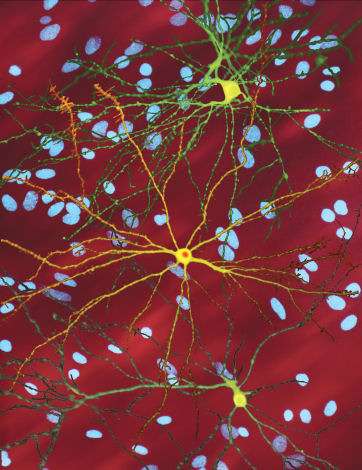The right mouse model is crucial for Huntington's disease drug development

Huntington's disease (HD) is an incurable and fatal hereditary disease. Developing disease-modifying drugs to treat patients with HD depends on studying them in animal models. Scientists evaluated the mouse models used for developing new treatments for mood disorders in HD and recommended which of these models are most relevant to their studies. Their findings are published in the Journal of Huntington's Disease.
"Patients with HD commonly suffer from debilitating mood disorders, but developing disease-modifying drugs for HD has proved to be extremely challenging," explained lead investigator Robert M. Friedlander, MD, MA, Chair and Walter E. Dandy Professor of Neurosurgery and Neurobiology at University of Pittsburgh School of Medicine, and Neuroapoptosis Laboratory, Department of Neurological Surgery, University of Pittsburgh, Pittsburgh, PA. "One reason could be that we are not using the right animal models in research."
The amount of serotonin transporter (SERT), a molecule commonly targeted by medications to regulate mood, is increased in the brain of patients with HD. Investigators compared SERT levels in normal and Huntington's brain tissue samples, as well as brain tissues from two different mouse models of the disease. They found that the amount of SERT was increased in HD patients compared with controls, and that this finding was modeled in one type of mouse model, but not another.
Investigators found that HD patients have significantly increased SERT protein levels in one region of the brain, the striatum, which coordinates multiple aspects of cognition, but not in the globus pallidus, which regulates voluntary movement. The neurodegenerative process commences in and most severely affects the striatum, affecting other brain regions as the disease progresses. This likely has an impact on the prevalent mood disorder in HD. Increased SERT levels are demonstrated in the brain of CAG140 mice, a full-length knock-in mouse model of the disease, but not in the striatum of the R6/2 fragment murine model of the disease.
Based on this parameter, the investigators recommend that the CAG140 huntingtin knock-in mouse model is more suitable than the R6/2 model for the study of serotonergic pathway pathology in HD. This is important because researchers should be sure to use the appropriate disease models when designing experiments. However, they conclude, there is no mouse model that completely recapitulates human HD. Each mouse model has its strengths and weaknesses and it is therefore important to use complementary models and always relate to known findings in human tissue.
"We found that not all HD mouse models are the same, so researchers need to use the models that are most relevant to their studies," commented Dr. Friedlander. "This advance in our understanding of the mood-related symptoms in HD is key to designing treatments that will improve the quality of life for patients with this disease."
HD is a fatal genetic neurodegenerative disease characterized by atrophy of certain regions of the brain. It causes the progressive breakdown of nerve cells in the brain. HD patients experience behavioral changes and uncontrolled movements. Symptoms include personality changes, mood swings and depression, forgetfulness and impaired judgment, and unsteady gait and involuntary movements (chorea). Every child of an HD parent has a fifty percent chance of inheriting the gene. Patients usually survive ten to twenty years after diagnosis.
More information: Yanqing He et al. Increased Serotonin Transporter Expression in Huntington's Disease Patients Is Not Consistently Replicated in Murine Models, Journal of Huntington's Disease (2019). DOI: 10.3233/JHD-180318















